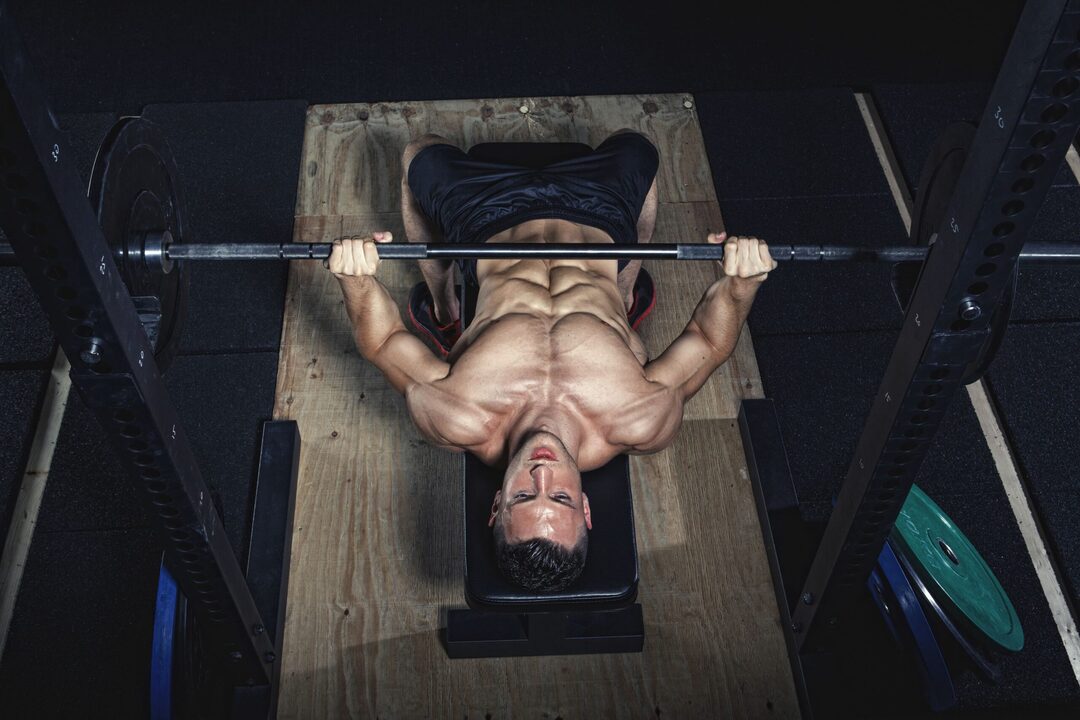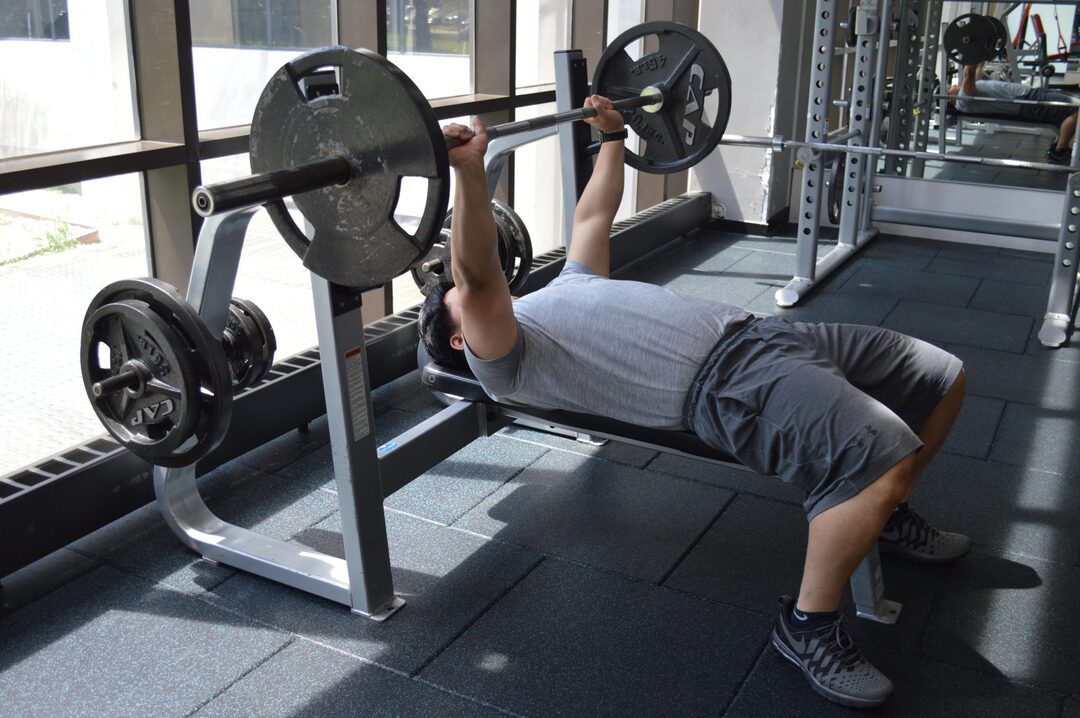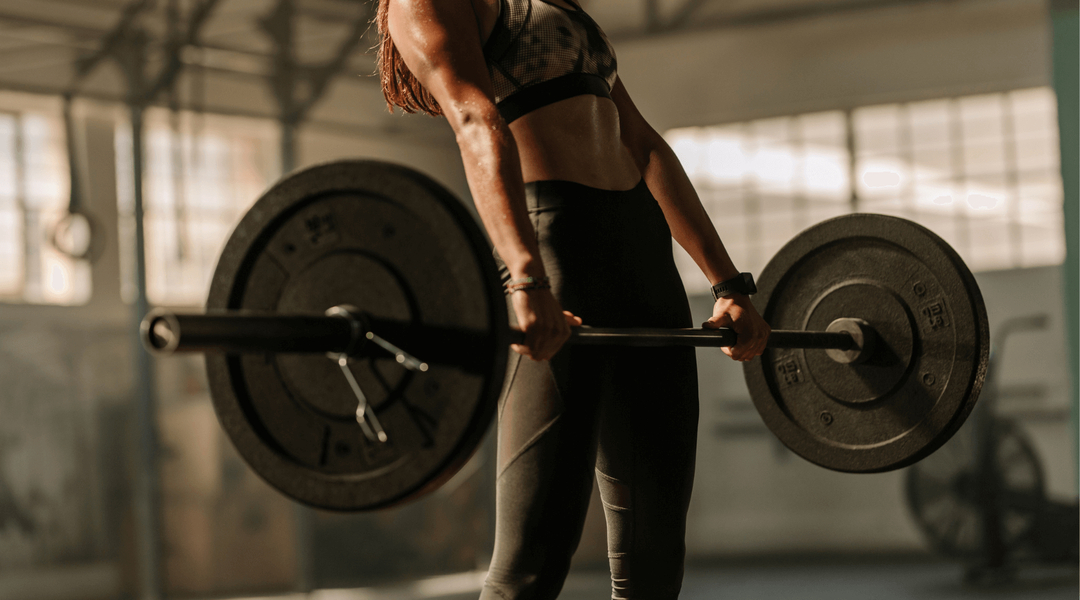Average Hand Grip Strength Chart

Compare your results with our grip strength chart—see how your hand strength measures up by age and gender, and learn what’s considered strong.
You know the small moments when hand strength matters most: a jar lid that will not budge, carrying heavy grocery bags, or finishing a complex set of dead hangs. In the world of Best Fitness Apps, grip strength often sits behind step counts and heart rate, yet it gives a precise measure of handgrip strength, forearm power, grip endurance, and functional fitness.
This guide lays out easy-to-read grip strength charts, normative data, and percentiles so you can compare your grip score by age and gender and plan practical training or rehab steps.
To make it easy, GetFit AI’s AI fitness app turns your grip test into a clear report with hand-strength benchmarks, measurement tips, and personalized training cues, so you can track progress and bridge the gap between where you are and the average strength for your age and gender.
Summary
- Average grip strength is 72.6 pounds for men and 44 pounds for women, so use chart bands as percentiles to translate a dynamometer reading into a gap, and pursue 6- to 12-week micro-goals to move between bands.
- Firmer grip predicts broader health outcomes, with a review linking higher grip strength to about a 30% reduction in cardiovascular disease risk and a 5 kg decrease in grip strength to a 16% higher mortality risk.
- Treat testing as a short diagnostic battery, using three trials and the median, standardizing time of day, and smoothing with a rolling median or 7-day average, because a 1 kg increase in grip strength links to a 3% reduction in cardiovascular risk and a 5 kg increase links to a 10% reduction in all-cause mortality.
- Program grip like a focused skill block: two targeted sessions per week plus one maintenance day, strength work at 3 to 5 sets of 3 to 8 reps, and 90 to 180 seconds of high-tension time per session, noting that 5 minutes a day of gripper work can improve strength by about 15% and regular training can yield up to 30% gains.
- Physiology and aging shape limits and pacing, with grip strength declining roughly 1.5 kg per decade after 40, tendon adaptation running slower than muscle, and general physical activity able to increase grip by up to 10%, so monitor asymmetries over 10% and prioritize tendon and neural progressions.
- GetFit AI's AI fitness app addresses this by turning grip tests into clear reports with age and gender benchmarks, measurement tips, and personalized progression cues.
Average Hand Grip Strength Chart

The average grip strength chart is a performance map that shows where a single dynamometer reading falls relative to population norms and athlete benchmarks so that you can set clear, measurable targets. For context, the average grip strength for men is 72.6 pounds, and the average grip strength for women is 44 pounds. Both represent typical adult averages measured with a dynamometer.
What does each band on the chart mean?
Across ages and sexes, the chart’s colored bands represent relative performance tiers, not absolutes. Think of the bands as lanes on a track: one lane shows where most active adults land, another shows the lower end often tied to sedentary decline, and the upper lanes point toward athlete-level outputs. Use the bands to translate a raw number into a percentile and then into a training strategy, rather than treating the chart like a pass/fail yardstick.
How should you turn a reading into a target?
If you want to move from a normative band to an athlete benchmark, calculate the gap and break it into weekly micro-goals. For example, convert the difference into progressive overload steps, such as adding small weight increments, more time under tension, or extra volume over 6 to 12 weeks. Track one consistent testing protocol, set weekly increments you can sustain, and treat each increase as a measurable win, not a vague aspiration.
Most people handle grip training the old way —by guessing sets and chasing soreness. That’s understandable because it feels simple. The hidden cost is wasted effort and slow progress, since mismatched volume or one-off max attempts bury the signal you need to adjust programming. Platforms like GetFit AI close that loop, mapping your chart reading to athlete-modeled routines, automatically changing sets and progression, and letting users chat with athletes for course correction and accountability, so the program tightens as you improve.
What causes day-to-day fluctuation in readings?
Small swings come from fatigue, hydration, time of day, and the hand you test with. Treat the measurement like weighing yourself on an uneven scale: a single reading can wobble. Use a standard protocol (three trials with short rests), the median value, test at the same time of day, and log contextual notes so changes reflect real strength gains rather than noise.
How do athletes convert the chart into a training plan?
When we design short microcycles, we build two things: a testing cadence and a progression ladder. Test weekly or biweekly with the same setup, then cycle through 2- to 4-week blocks focused on strength grip work, such as heavy gripper holds, slow eccentrics, and loaded carries. Adjust load by percentage of your working max or by adding 1 to 2 quality reps per session until you clear the next band on the chart.
This chart can feel alienating when numbers float without context; many people find it deflating instead of motivating. That pattern holds for beginners and experienced lifters: charts alone rarely drive adherence, but when paired with a coachable plan and conversational accountability, numbers become milestones you actually chase.
That gap between seeing a number and turning it into momentum is where things start to get interesting.
Average Grip Strength in Kg
Age Group: 20 to 29
- Men Right: 47 (9.5)
- Men Left: 45 (8.8)
- Men BMI: 26.4 (5.1)
- Women Right: 30 (7)
- Women Left: 28 (6.1)
- Women BMI: 25.1 (5.8)
Age Group: 30 to 39
- Men Right: 47 (9.7)
- Men Left: 47 (9.8)
- Men BMI: 28.3 (5.2)
- Women Right: 31 (6.4)
- Women Left: 29 (6)
- Women BMI: 27.3 (6.8)
Age Group: 40 to 49
- Men Right: 47 (9.5)
- Men Left: 45 (9.3)
- Men BMI: 28.4 (4.6)
- Women Right: 29 (5.7)
- Women Left: 28 (5.7)
- Women BMI: 27.7 (7.7)
Age Group: 50 to 59
- Men Right: 45 (8.4)
- Men Left: 43 (8.3)
- Men BMI: 28.7 (4.3)
- Women Right: 28 (6.3)
- Women Left: 26 (5.7)
- Women BMI: 29.1 (6.4)
Age Group: 60 to 69
- Men Right: 40 (8.3)
- Men Left: 38 (8)
- Men BMI: 28.6 (4.4)
- Women Right: 24 (5.3)
- Women Left: 23 (5)
- Women BMI: 28.1 (5.1)
Age Group: 70+
- Men Right: 33 (7.8)
- Men Left: 32 (7.5)
- Men BMI: 27.2 (3.9)
- Women Right: 20 (5.8)
- Women Left: 19 (5.5)
- Women BMI: 27 (4.7)
Related Reading
- Best Fitness Apps
- How Many Pull Ups Should I Be Able To Do
- Average Bench Press By Age
- Average Grip Strength Male
- Average Bench Press
- How Much Does A Bench Press Bar Weigh
- Average Male Bench Press
- How Much Can The Average Man Bench Press
Why is Grip Strength Important?

Grip strength matters because it is a compact, actionable indicator of both athletic capacity and long-term health, and it ties directly to cardiovascular risk and survival trends. You can treat it like a single, high-signal dial that tells you whether your training is transferring into durable, usable strength or just noise.
What does grip strength predict that other measures miss?
Grip strength captures neuromuscular integrity and tissue quality in a way that broad metrics sometimes miss. A 2024 review, Hand grip strength as a proposed new vital sign of health: a narrative review of evidence, found that stronger grips are associated with a 30% reduction in the risk of cardiovascular disease, suggesting that hand strength often mirrors underlying cardiovascular and metabolic resilience rather than solely local forearm power.
Why is grip strength such a reliable, simple signal?
Grip strength integrates multiple systems into a single output: motor control from the brain and spinal cord, muscle mass and architecture in the forearm and hand, and systemic factors such as inflammation and insulin sensitivity. The result is a dose-response relationship you can practically use; for example, BBC Future reported that for every 5kg decrease in grip strength, there was a 16% increase in mortality risk, underlining how even modest losses register meaningfully across outcomes.
When focusing on grip becomes a problem, and why that pattern appears.
This misconception appears among athletes and longevity-minded people alike: they treat grip as a magic lever that, by itself, will buy them healthspan. When we ran athlete-derived grip blocks over 8-week microcycles, the pattern became clear: increases in maximal holds improved task performance and confidence quickly, but lasting systemic gains required parallel work on conditioning and metabolic load. Chasing grip numbers alone often feels efficient, yet it can create tunnel vision, wasting sessions on maximal testing without improving movement durability.
Most programs treat grip as an accessory. That familiar approach works early, because adding a few holds or gripper sets is easy and feels like progress. As demands rise, the cost appears: plateaus, recurring elbow or wrist irritation, and missed carryover to athlete tasks. Solutions like GetFit AI bridge that gap by mapping athlete-modeled routines to personalized grip milestones, automatically tuning volume and intensity, and offering conversational coaching for technique tweaks, reducing guesswork while keeping recovery and role-specific priorities in balance.
How should you prioritize grip work in real programs?
If your sport or job depends on sustained holds or frictional strength, prioritize heavy, low-rep efforts and long-duration carries in concentrated 2- to 4-week blocks. If you need fatigue resistance for repeated hand tasks, use higher-rep timed sets and tempo-controlled eccentrics. When time is limited, choose quality over quantity: a few well-structured weekly sessions focused on tension, positional variety, and progressive overload deliver more usable gains than daily random gripper fiddling. Think of grip training like sharpening a tool: a few focused strokes set the edge better than constant, unfocused scraping.
Grip strength is tangible, but not the whole story; it gives you an honest signal and a straightforward place to act, yet it only reaches its full value when paired with the right priorities and checks.
That next piece will force you to confront a surprising tradeoff everyone glosses over about how we actually measure strength.
How Do You Measure Grip Strength?

Precise measurement means more than one number. Treat grip testing as a short diagnostic battery that captures peak force, how quickly you produce force, endurance under tension, and left-right balance, then record those signals consistently so real trends separate from day-to-day noise.
What specific metrics should I record?
Record peak isometric force, rate of force development, time-to-peak, sustained-hold duration at a fixed percentage of max, and the percent difference between hands. Peak force tells you top-end capacity; rate of force development shows explosive grip power useful for athletic tasks; endurance reveals fatigue resistance that peak numbers miss. Normalize key values to body mass to make comparisons across athletes feel fair, and track both absolute and relative gains, as they tell different stories.
How do I reduce measurement noise so I trust the trend?
Standardize the test context, then use simple statistical guards. Test at the same time of day, avoid testing immediately after heavy upper-body sessions, and log sleep, caffeine, and acute soreness. Collect a short baseline of repeated tests across a week to estimate your personal test-retest variation, then use a rolling median or 7-day average to smooth spikes. If a change falls within your baseline variability, treat it as noise; if it consistently clears that band over two weeks, treat it as a signal.
Which changes should I make, and why they matter
Minor, reliable improvements are meaningful because grip shifts map onto bigger health and performance outcomes, which is why even modest gains are worth pursuing, as Research indicates that a 1kg increase in grip strength is associated with a 3% reduction in the risk of cardiovascular disease — BBC Future. And when you scale those gains, the payoff compounds, since A 5kg increase in grip strength is linked to a 10% reduction in the risk of all-cause mortality — BBC Future, 2025. In practice, use your device’s known measurement error to define a minimal detectable change, then only change programming when performance clears that threshold and holds.
Which tools and protocols give the cleanest data?
Clinical-grade dynamometers such as the Jamar family remain the practical standard for repeatability because they provide stable handles and known accuracy. For deeper analysis, instrumented force sensors that sample at high frequency reveal force-time curves, allowing you to measure the rate of force development and the area under the curve, not just the peak.
Low-cost options like pinch sensors or smartphone attachments give decent trends but require careful calibration and the same device every time. Calibrate annually if you rely on absolute values, and replace worn grips, as physical wear can shift readings without changing your strength.
What patterns show up when testing athletes, and what to watch for
When we coached a group of weekend climbers for six weeks, peak numbers improved modestly, but RFD surged after introducing explosive grip drills, and those RFD gains tracked with better performance on short, dynamic routes. The pattern was clear: gains that feel big in training sometimes show small immediate peak changes, but they alter how force is applied, which matters for sport tasks. Watch for asymmetric gains larger than about 10 percent between hands, persistent plateaus despite progressive overload, or sudden drops of more than your baseline variability; each suggests either a technical flaw, recovery problem, or an emerging injury.
Most people handle testing as a one-off ritual, and that familiarity works early, but it hides costs as volume and complexity grow. As testing becomes ad hoc, trends fragment, false alarms multiply, and coaching decisions revert to guesswork. Platforms like GetFit AI schedule consistent assessments, normalize scores to body mass and athlete benchmarks, flag changes that exceed your personal noise floor, and translate those signals into athlete-modeled progression suggestions, turning monthly noise into weekly, actionable guidance while preserving context.
How should I log and visualize results so that the data stays useful?
Log every test with date, time, device model, recent training load, nutrition notes, and perceived exertion. Visualize both raw values and normalized scores with a shaded band showing baseline variability. Use annotations to mark program changes, sleep debt, or illness so you can link causation to effect. Treat the chart like a flight recorder: anomalies matter only when they repeat and coincide with training or health changes.
Think of testing like tuning an instrument, not like taking a photo. A single reading is a snapshot; a disciplined battery and a clear signal-to-noise rule give you a steady melody you can improve deliberately.
That method makes you ask a more complex question: which drills actually move those validated metrics consistently, and why some feel-good exercises never change the numbers?
Best Exercises For Improving Grip Strength

These exercises work when you program them like any other strength block: pick the weakness you want to shift, use progressive overload, and measure the result. With simple sequencing and recovery rules, short, focused efforts on crush, support, and pinch work produce measurable gains you can track against athlete-modeled targets.
How should I sequence these drills across a week?
Treat grip like a short, high-intensity skill block. Schedule two focused grip sessions per week, separated by 48 to 72 hours, plus one light maintenance day for endurance work. In practice, that looks like one heavy session emphasizing low-rep, high-tension work for crush and pinch, and one session built around timed holds and carries for support and fatigue resistance, with brief daily mobility and neural prep before any heavy upper-body work.
Which set and rep ranges actually move the needle?
Use load and time to control the stimulus, not arbitrary repetition. For strength-oriented crush work, aim for 3 to 5 sets of 3 to 8 maximal squeezes or heavy gripper closes, with full recovery between sets, treating each rep as a near-max effort. For support endurance, the program repeated hangs or carries in the 10 to 60 second window, accumulating 90 to 180 seconds of total high-tension time per session.
For pinch, use short, intense holds of 5 to 10 seconds, 5 to 10 reps, or transfer circuits that force the thumb to stabilize under load. Small, consistent doses are better than scattershot volume; even a focused five-minute daily habit can yield real change, as The New York Times reports that using a hand gripper for 5 minutes a day can improve grip strength by 15%, which explains why frequency with intent beats aimless repetition.
How do I progress without breaking my wrist or elbow?
The standard failure mode is volume creep, not lack of will. When people pile on sets without planned recovery, tendons and joint capsules accumulate microtrauma and progress stalls. Use a two-week rolling rule: increase load or time only if your median test value falls within your personal variability band for two consecutive weeks, and deload for one week every fourth week to consolidate gains.
Pair heavy days with targeted mobility and 48 hours of low-load activity; swap modalities if pain appears, for example, replacing long hangs with rack holds to reduce shoulder stress. These controls keep improvements durable, and they matter because regular, structured work can produce significant shifts in capacity, as The New York Times notes, grip strength can increase by up to 30% with regular exercise, a ceiling you approach only when programming and recovery align.
Why do some exercises transfer better to sport and daily life?
Transfer is a specificity problem. If you need sustained friction for carrying groceries or hanging on during a climb, prioritize long-duration carries and timed holds under bodyweight or loaded implements. If you need maximal closing force, prioritize heavy gripper work and slow eccentrics. The pattern appears across older adults and athletes alike: those who replace random gripper fiddling with concentrated 2 to 4 week blocks of task-specific drills report faster, usable improvements in daily function and confidence, which reduces the anxiety many feel about losing independence and the real fear of falls and downstream decline.
Most people handle grip training the familiar way, by tacking on a few sets when they think of it. That works early, but as demands rise, it fragments into wasted time, plateaus, and nagging joint irritation. Platforms like AI fitness app centralize athlete-modeled routines, automatically scale volume based on your test trends, and allow you to chat with an athlete persona for technique tweaks, so users move from guessing to targeted progression without extra planning overhead.
What practical checklist should I use before starting a block?
Warm the wrist and thumb with light mobility and three submaximal activations, pick one primary objective for the week, limit total high-tension time to a target that increases by no more than 10 to 20 percent per week, and log perceived soreness and the exact implement used. Think of your grip block like sharpening a tool: a deliberate set of strokes at the right angle beats frantic rasping.
Ready to train like the legends and finally achieve the body you've always wanted? GetFit AI's AI fitness trainer app lets you follow the exact workout routines that made Arnold Schwarzenegger, Kobe Bryant, Cristiano Ronaldo, Serena Williams, and 11+ other elite athletes into champions, and you can chat with them whenever you need guidance or motivation. Download the #1-rated AI fitness app for free today to get fit for less than the cost of a single month's gym membership, because greatness isn't born —it's built one workout at a time.
That progress looks tidy on a chart, but the next part exposes the less obvious forces that drive those numbers — and why some gains feel immediate while others sneak up on you.
Related Reading
- Bench Press Standards
- Do Pull Ups Work the Chest
- Symmetric Strength
- Grip Strength Norms
- Average Deadlift Weight
- 1 Rep Max Chart
- Average Male Deadlift
- Good Bench Press Weight
- Weightlifting Standards
Key Factors Influencing Grip Strength

Grip strength flows from more than muscle size; it is an outcome of tissue health, nervous-system control, hormonal milieu, and the pattern of daily loading you apply to your hands. Below, I break down the less obvious drivers you should watch, then show how everyday habits quietly create friction in progress and what better workflows look like.
How does connective tissue and tendon health change what your hand can do?
Tendons and the collagen matrix around the wrist limit how force is transferred from the forearm to the fingers. Tendon adaptation runs on a slower clock than muscle, so sudden jumps in load tend to provoke tendon irritation rather than sustained strength gains. Practically, that means progressive heavy loading must be paced, and failure modes look like a slow ache that worsens with volume rather than an abrupt loss of feeling. If you treat tendon work as an afterthought, you’ll get short bursts of improvement followed by weeks of scaled-back training.
Why does nervous-system control matter as much as raw force?
Rate of force development, motor-unit recruitment, and intermuscular coordination determine whether your grip can be explosive, enduring, or both. Neural capacity declines faster with disuse than muscle mass does, so skill-like training—brief, high-intent efforts that emphasize speed and clean tension—rewires output more efficiently than blindly adding reps. The typical performance pattern is clear: athletes who combine targeted neural drills with strength work improve task-specific grips faster than those who add only volume.
How does age alter that whole equation?
Age reshapes the entire system, not just muscle size, and the change is steady enough to plan around, so you do not get surprised by slow declines. According to Factors associated with handgrip strength across the life course: A systematic review, grip strength decreases by approximately 1.5 kg per decade after the age of 40. That decline reflects combined shifts in tendon stiffness, reduced motor-unit firing, and lower anabolic signaling, which means programs for middle-aged athletes must emphasize recovery, targeted high-load exposures, and neural maintenance to hold ground.
Most people handle grip training in an ad hoc way, with random frequency and relying on general lifting to carry the load. That works for a while, but as volume rises and goals become specific, it fragments into overuse injuries, asymmetries, and stalled progress. Platforms like GetFit AI centralize athlete-modeled progression, scale volume automatically to your test trends, and let you chat with athlete personas for technique tweaks, reducing guesswork and the hidden cost of trial-and-error.
How do day-to-day tasks and occupational loading shape your baseline?
Repetitive low-load work builds endurance and resilience in the hand, while intermittent heavy tasks build peak closing strength; they produce different physiologies. Think of the hand like a blade: daily use keeps the edge honed, but only deliberate, heavy strokes regrind the metal. That explains why two people with similar gym time can have very different functional grip outcomes depending on whether their workday is spent typing, carrying gear, or handling tools.
Which lifestyle and medical pieces quietly shift progress?
Sleep debt, chronic inflammation, and certain medications change the quality of muscle and tendon recovery. Low-grade systemic inflammation reduces muscle contractile efficiency. Medications such as long-term corticosteroids or some lipid-lowering drugs can blunt gains or increase injury risk. The practical move is routine checks: if strength drops without training changes, review sleep, medication history, and signs of inflammation before simply adding more volume.
What small interventions actually move the needle?
Targeted, consistent activity matters more than random short-term effort; the cumulative effect is measurable. According to Factors associated with handgrip strength across the life course: A systematic review, physical activity can increase grip strength by up to 10%. Use that as a planning constraint: if an intervention promises more than that quickly, look for hidden costs. Also, prioritize symmetry checks, tendon-loading progressions, and neural-focused sessions so that increases are durable and transferable.
That simple pattern leaves a question most programs ignore: which adjustments protect you from the slow, avoidable losses that show up weeks later, not in the moment?
The frustrating part? This isn’t even the most complex piece to figure out.
Make Your Favorite Athlete Your Fitness Trainer | Try GetFit AI's AI Trainer App for Free Today 💪
We know the mix of excitement, shock, and doubt that comes after 18 months of hard work, and you deserve a more straightforward, measurable way forward. Consider GetFit AI and judge it by the results, since 50% of users reported improved fitness levels after using the app for 3 months. — User Testimonials, and it is rated 4.8 out of 5 by more than 1,500 users.
Related Reading
- Average Bench Press By Age 16
- Best Free Workout Apps
- Best Calisthenics Workout App
- Average Deadlift Weight For Male
- Average Deadlift Weight Kg
- Best Workout Apps
- Best Hiit Workout App
- Best Workout Tracker App
- Average Bench Press Kg By Age
- Best Gym Workout App
- How Many Pull-Ups Can the Average Person Do
- Pull-Up Strength Standards
- Weighted Pull-Up Standards
- Weighted Dips Strength Standards
- Grip Strength Standards
- Average Dumbbell Shoulder Press
- Average Incline Dumbbell Press



.png)
.png)











